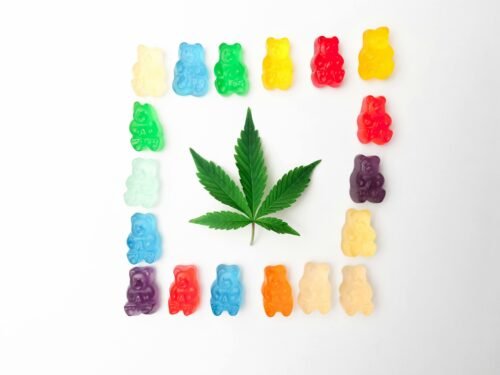
Hapların Erimesi Ne Kadar Sürer? | GrandPack

Kapsüller Nasıl Yapılır: Adım Adım Kapsül Üretim Kılavuzu
Sakızlı Ayıcıklar Son Kullanma Tarihine Ulaşır mı? | GrandPack
giriiş
Hiç merak ettiniz mi? Yapmak sakızlı ayıcıklar sona ermek kilerinize koyduktan sonra? Sakızlı şeker neredeyse ölümsüz gibi görünse de, bu renkli ikramların aslında sınırlı bir raf ömrü vardır. Anlamak sakızlı ayıcıklar ne kadar dayanır ve ister sakızlı ayıcıklar bozulabilir mi bayat bir çiğneme veya daha kötüsü tatsız bir sürprizle karşılaşmanızı önlemeye yardımcı olur.
Bu kılavuzda şunları keşfedeceğiz: sakızlı şeker ne kadar dayanır, işaretler Sakızlar bozulabilir mi?ve depolama için en iyi uygulamalar—artı bir göz atın Büyük Paket'nin son teknoloji ürünü Sakız fabrikası Her partinin taze kalmasını sağlayan bir işlem.

Sakızlı Ayıcıklar Neden Son Kullanma Tarihine Uğrar?
Sakızlı ayıcıklar temel olarak jelatin, şeker ve tatlandırıcıdan oluşur. Düşük nem ve yüksek şeker içerikleri doğal koruyucu görevi görür, bu da sakızlı şekerin genellikle birçok bozulabilir atıştırmalıktan daha uzun süre dayanması anlamına gelir. Ancak, zamanla sakızlı ayıcıklar çiğnenebilirliğini kaybedebilir, sertleşebilir veya—uygun şekilde saklanmazsa—küf veya kötü tatlar geliştirebilir. Açılmamış bir torba genellikle altı ay ile bir yıl arasında dayanır Kapalı bir şekilde saklandığında ve serin, kuru bir yerde saklandığında. Açıldıktan sonra havaya ve neme maruz kalması şekerin kristalleşmesini hızlandıracağından birkaç ay içinde kalitesini kaybetmeye başlayabilir.
-500x333.jpg)
Sakızlı Şekerler Ne Kadar Süre Dayanır?
Açılmamış Sakızlı Ayıcıklar: Çoğu üretici, üretimden itibaren 6-12 ay içinde tüketilmesini öneriyor. Bu süre zarfında, sakızlar genellikle orijinal tatlarını, dokularını ve renklerini korurlar[1]
Açılmış Sakızlı Şeker: Mühür kırıldıktan sonra, hava geçirmez bir kapta düzgün bir şekilde saklanırsa yaklaşık 2-4 ay boyunca en yüksek kaliteyi bekleyin. Bundan sonra, sakızların daha sertleştiğini veya birbirine yapıştığını fark edebilirsiniz.
Ev Yapımı Sakızlar: Ticari koruyucu maddeler içermeyen ev yapımı jöle şekerler oda sıcaklığında genellikle yalnızca 1-2 hafta dayanır; buzdolabında saklanırsa raf ömrü yaklaşık bir aya kadar uzayabilir.
İlgili Soru: Sakızlı Ayıcıklar ve Dev Ekşi Sakızlı Solucanlar Ne Kadar Süre Dayanır?
Büyük yenilik şekerleri gibi dev ekşi sakızlı solucan Benzer bir zaman çizelgesini takip edebilirler - açılmadan yaklaşık 6-12 ay - ancak ekstra yüzey alanları daha hızlı nem kaybına yol açabilir ve bu da onları standart sakızlı ayıcıklardan zamanla biraz daha sert hale getirir.
Sakızlı Ayıcıkların Bozulduğuna İşaret Eden Belirtiler
Sakızlı ayıcıklar en iyi zamanlarından sonra nadiren ciddi sağlık riskleri oluştursa da, bunu bilmek akıllıca olacaktır. sakızlı şekerin son kullanma tarihinin geçip geçmediği nasıl anlaşılır:
Doku Değişiklikleri: Aşırı sert, taneli veya tebeşirli hissedilen jöle şekerler büyük olasılıkla şeker kristalleşmesine uğramıştır.
Koku Giderme: Ekşi veya bayat bir koku, tatlandırıcılarda mikrobiyal büyüme veya bayatlama olduğunu gösterir.
Renk Solması veya Renk Bozulması: Eğer parlak tonlar donuklaştıysa veya beyaz, pudramsı lekeler görüyorsanız, bu genellikle nem göçünün ve şeker patlamasının işaretidir.
Görünür Küf: Düşük nem nedeniyle nadir de olsa, sakızlar nemi emerse küf oluşabilir. Hemen atın.

Sakızlı Şekerin Raf Ömrünü Etkileyen Faktörler
Birkaç unsur etki eder sakızlı şeker ne kadar dayanır ve ister sakızlı ayıcıklar bozulabilir mi erken:
Depolama Sıcaklığı: Isı şekerin kristalleşmesini hızlandırır. Sakızları serin oda sıcaklığında (60–70°F) saklayın.
Nem Seviyeleri: Yüksek nem, şekerlerin nemi emmesine ve yapışkanlığa veya küflenmeye neden olur. Hava geçirmez, yeniden kapatılabilir bir torba şarttır.
Ambalaj Bütünlüğü: Yırtık veya kötü kapatılmış bir poşet, sakızlı gıdanın iki düşmanı olan havayı ve nemi davet eder.
İçindekiler ve Koruyucular: Şekersiz veya "tamamen doğal", sitrik asit veya yapay koruyucu maddeler içermeyen sakızların raf ömrü genellikle daha kısadır, açılmamış olsalar bile 6 aya yakındır.
Diğer Gıdalarla Temas: Şekerlemeleri, koku geçirgen ambalajlar yoluyla yayılabilecek keskin kokulu maddelerin (örneğin soğan) yanında saklamaktan kaçının.
Sakızlı Ayıcıklar Nasıl Doğru Şekilde Saklanır
Hava Geçirmez Kaplar veya Orijinal Ambalaj: Eğer açılmışsa, havayla temasını en aza indirmek için sakızları tekrar kapatılabilen bir torbaya veya hava geçirmez bir kaba aktarın.
Serin, Karanlık Yer: Doğrudan güneş ışığından ve ısı kaynaklarından (ocak veya fırın gibi) uzak bir kiler, dokunun korunmasına yardımcı olur.
Buzdolabında Saklamaktan Kaçının (Ev Yapımı Değilse): Ticari sakızlar, oda sıcaklığında stabil kalmalarını sağlayan koruyucu maddeler içerir. Soğutma, çıkarıldığında yoğunlaşmaya neden olabilir ve şekerin erimesini hızlandırabilir. Ev yapımı veya narin gurme sakızlar için, kapalı bir kapta soğutma önerilir.
Gıda Sınıfı Silika Paketleri Kullanın: Kabın içine küçük bir kurutucu paket koymak fazla nemi emer, çiğnenebilirliğini ve lezzetini uzatır.
GrandPack'in Sakızlı Tazelikte Rolü
GrandPack'te Sakız fabrikası, gelişmiş ekipman ve sıkı kalite kontrolleri her sakız partisinin daha uzun süre en yüksek tazelikte kalmasını sağlar Sakızlı Üretim Hattı nem değişimini ve kontaminasyonu en aza indirmek için hassas sıcaklık düzenlemesi, vakumlu gaz giderme ve otomatik paketleme kullanır. GrandPack'in anahtar teslimi sakızlı şeker çözümüÜreticiler, tutarlı renk, lezzet ve dokuya sahip, raf ömrü uzun sakızlar üretebilir ve böylece son tüketicilerin çiğnenebilir lezzetin tadını amaçlanan süre içinde çıkarmasına yardımcı olabilir. sakızlı ayıcıklar ne kadar dayanır zaman aralığı.
Bonus İpuçları: Sakızlar Aşırı Koşullarda Bozulur mu?
Sıcak İklimler: 80°F'nin üzerindeki sıcaklıklar, sakızları yumuşatabilir ve şekillerin eğrilip birbirine yapışmasına neden olabilir.
Donmak: Dondurmak mikrobiyal büyümeyi durdururken, sakızlı dokuyu değiştirebilir. Dondurmanız gerekiyorsa, yoğunlaşmayı önlemek için oda sıcaklığında, mühürlü torbada çözdürün.
Vakumlu Paketler: Uzun süreli saklama için (bir yıla kadar açılmadan), birçok ticari sakız markasında bulunan vakumlu veya nitrojenle doldurulmuş ambalajları tercih edin.

Referanslar
[1].Sakızlı Şekerlemenin Tatlı Bilimi: Sadece Çiğnenebilir Bir Lezzetten Daha Fazlası. Bruce 24 Nisan 2025.Büyükbaba.




